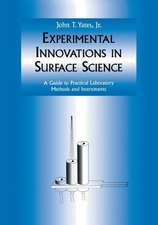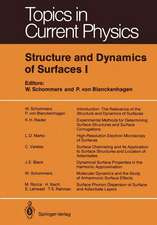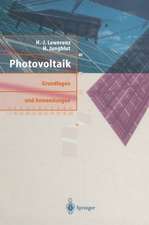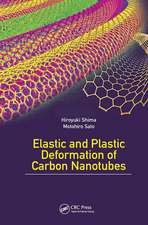Carbon Nanotubes: From Bench Chemistry to Promising Biomedical Applications
Editat de Giorgia Pastorinen Limba Engleză Hardback – 31 ian 2011
Preț: 567.55 lei
Preț vechi: 754.04 lei
-25% Nou
Puncte Express: 851
Preț estimativ în valută:
108.61€ • 117.94$ • 91.24£
108.61€ • 117.94$ • 91.24£
Carte tipărită la comandă
Livrare economică 22 aprilie-06 mai
Preluare comenzi: 021 569.72.76
Specificații
ISBN-13: 9789814241687
ISBN-10: 9814241687
Pagini: 156
Ilustrații: 139
Dimensiuni: 178 x 254 x 23 mm
Greutate: 0.98 kg
Ediția:1
Editura: Jenny Stanford Publishing
Colecția Jenny Stanford Publishing
ISBN-10: 9814241687
Pagini: 156
Ilustrații: 139
Dimensiuni: 178 x 254 x 23 mm
Greutate: 0.98 kg
Ediția:1
Editura: Jenny Stanford Publishing
Colecția Jenny Stanford Publishing
Public țintă
Academic and PostgraduateCuprins
Contributors. Preface. Stabilisation of Carbon Nanotube Suspensions. Introduction. Functionalised CNTs for Drug Delivery. Surface-Active Agents in Stabilising CNT Suspensions. Stabilisation of Aqueous Suspensions of Carbon Nanotubes by Self-Assembling Block Copolymers. Stabilisation of Aqueous Suspensions of Carbon Nanotubes by Chitosan and its Derivatives. Biomedical Applications I: Delivery of Drugs. Introduction. Non-Covalent Functionalisation on the External Walls. "Defect" Functionalisation at the Tips and Sidewalls
Covalent Functionalisation on the External Sidewalls. Encapsulation Inside CNTs Conclusions and Perspectives. Biomedical Applications II: In_luence of Carbon Nanotubes in Cancer Therapy. Importance of Nanotechnology in Cancer Therapy. Carbon Nanotubes: A Brief Overview. Carbon Nanotubes as Drug Vectors in Cancer Treatment. Delivery of Oligonucleotides Mediated by Carbon Nanotubes. Carbon Nanotubes in Radiotherapy. Carbon Nanotubes in Thermal Ablation. Biosensors Based on Carbon Nanotubes. Conclusions. Biomedical Applications III: Delivery of Immunostimulants and Vaccines. Introduction to the Immune System. Immunogenic Response of Peptide Antigens Conjugated to Functionalised CNTs. Interaction of Functionalised CNTs with CPG Motifs and Their Immunostimulatory Activity. Immunogenicity of Carbon Nanotubes. Conclusions. Biomedical Applications IV: Carbon Nanotube–Nucleic Acid Complexes for Biosensors, Gene Delivery and Selective Cancer Therapy. Introduction. Interaction of CNTs with Nucleic Acids. Sensors and Nanocomposites. CNT–Nucleic Acid Complexes for Gene Delivery and Selective Cancer Treatment. Biomedical Applications V: In_luence of Carbon Nanotubes in Neuronal Living Networks. Introduction. Effects of Carbon Nanotubes on Neuronal Cells’ Adhesion, Growth, Morphology and Differentiation. Electrical Stimulation of Neuronal Cells Grown on Carbon Nanotube-Based Substrates. Investigation of the Mechanisms of the Electrical Interactions Between CNTs and Neurons. Conclusions and Perspectives. Biomedical Applications VI: Carbon Nanotubes as Biosensing and Bio-interfacial Materials. Introduction. Biosensor. Bio-interface. Conclusions. Toxicity of Carbon Nanotubes. Introduction. Parameters Responsible for the Toxicity of CNTs. Environmental Exposure. Conclusion. Overview on the Major Research Activities on Carbon Nanotubes being done in America, Europe and Asia. Introduction. America. Europe. Asia. Index.
Covalent Functionalisation on the External Sidewalls. Encapsulation Inside CNTs Conclusions and Perspectives. Biomedical Applications II: In_luence of Carbon Nanotubes in Cancer Therapy. Importance of Nanotechnology in Cancer Therapy. Carbon Nanotubes: A Brief Overview. Carbon Nanotubes as Drug Vectors in Cancer Treatment. Delivery of Oligonucleotides Mediated by Carbon Nanotubes. Carbon Nanotubes in Radiotherapy. Carbon Nanotubes in Thermal Ablation. Biosensors Based on Carbon Nanotubes. Conclusions. Biomedical Applications III: Delivery of Immunostimulants and Vaccines. Introduction to the Immune System. Immunogenic Response of Peptide Antigens Conjugated to Functionalised CNTs. Interaction of Functionalised CNTs with CPG Motifs and Their Immunostimulatory Activity. Immunogenicity of Carbon Nanotubes. Conclusions. Biomedical Applications IV: Carbon Nanotube–Nucleic Acid Complexes for Biosensors, Gene Delivery and Selective Cancer Therapy. Introduction. Interaction of CNTs with Nucleic Acids. Sensors and Nanocomposites. CNT–Nucleic Acid Complexes for Gene Delivery and Selective Cancer Treatment. Biomedical Applications V: In_luence of Carbon Nanotubes in Neuronal Living Networks. Introduction. Effects of Carbon Nanotubes on Neuronal Cells’ Adhesion, Growth, Morphology and Differentiation. Electrical Stimulation of Neuronal Cells Grown on Carbon Nanotube-Based Substrates. Investigation of the Mechanisms of the Electrical Interactions Between CNTs and Neurons. Conclusions and Perspectives. Biomedical Applications VI: Carbon Nanotubes as Biosensing and Bio-interfacial Materials. Introduction. Biosensor. Bio-interface. Conclusions. Toxicity of Carbon Nanotubes. Introduction. Parameters Responsible for the Toxicity of CNTs. Environmental Exposure. Conclusion. Overview on the Major Research Activities on Carbon Nanotubes being done in America, Europe and Asia. Introduction. America. Europe. Asia. Index.
Recenzii
"This unique book comes at the right time when the scientific community and numerous organizations are divided on the potential applicability of carbon nanotubes. A concentrate of the most recent scientific discoveries written by highly recognized authors in the field. An excellent reference for inspiring scientists and students."
—Dr. Sylviane Muller, CNRS, France
"This book represents an extensive collection of the most updated studies that encourage the use of carbonbased nanostructures for biomedical applications. At the same time, the reader is cautioned about the potentially hazardous factors and the mischievous surprises associated with carbon nanotubes. This is a very interesting book, especially for young scientists seeking inspiration from the most fascinating discoveries in the field of nanotubes reported by selected research groups all over the world!"
—Prof. Hans E. Junginger, Naresuan University, Thailand
"This book offers the perspectives of both an enthusiastic acceptance of carbon nanotubes for biomedical applications and also the distrustful vision due to potential hazardous consequences deriving from their unpredictable effects. Much remains to be learned about this nanomaterial before its most effective applications and preventions of any untoward effect."
—Prof. Dusica Maysinger, McGill University, Canada
—Dr. Sylviane Muller, CNRS, France
"This book represents an extensive collection of the most updated studies that encourage the use of carbonbased nanostructures for biomedical applications. At the same time, the reader is cautioned about the potentially hazardous factors and the mischievous surprises associated with carbon nanotubes. This is a very interesting book, especially for young scientists seeking inspiration from the most fascinating discoveries in the field of nanotubes reported by selected research groups all over the world!"
—Prof. Hans E. Junginger, Naresuan University, Thailand
"This book offers the perspectives of both an enthusiastic acceptance of carbon nanotubes for biomedical applications and also the distrustful vision due to potential hazardous consequences deriving from their unpredictable effects. Much remains to be learned about this nanomaterial before its most effective applications and preventions of any untoward effect."
—Prof. Dusica Maysinger, McGill University, Canada
Notă biografică
Giorgia Pastorin received her MSc (110/110 cum laude) in pharmaceutical and chemistry technologies in 2000 and her PhD in 2004 from the University of Trieste, Italy. She then moved to France for two years of postdoctoral fellowship at the National Centre for Scientific Research (CNRS) in Strasbourg, where she acquired some skills in drug delivery under the supervision of Dr Alberto Bianco. She joined the National University of Singapore in June 2006 as assistant professor in the Department of Pharmacy.
Descriere
This book represents a critical evaluation of the most recent discoveries about carbon nanotubes and includes a cautious description of their impact on personal health and environmental pollution.
























